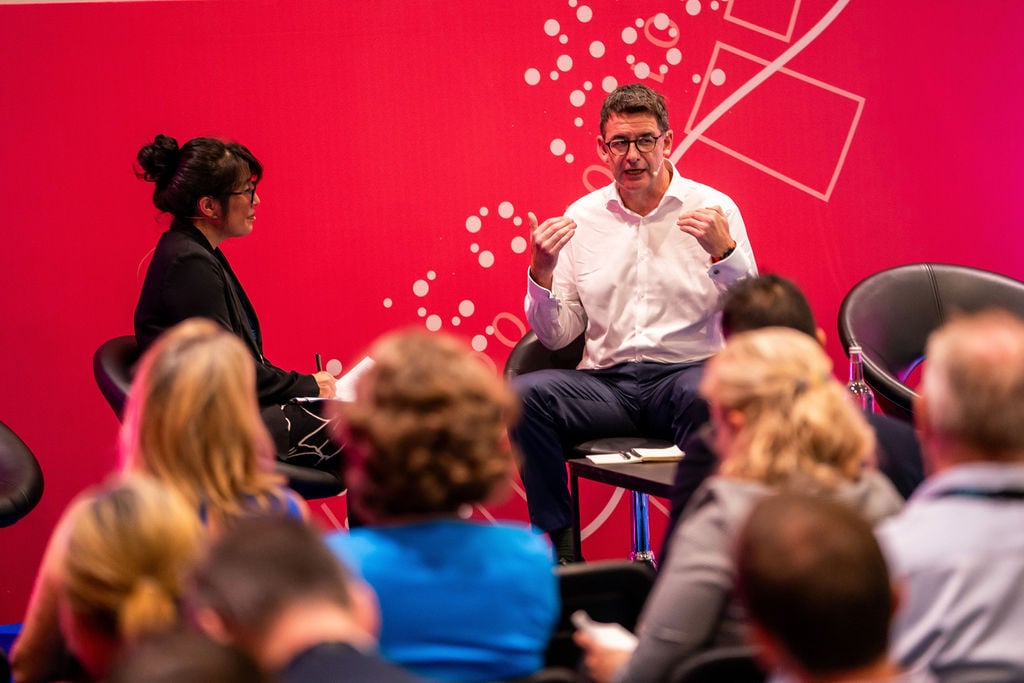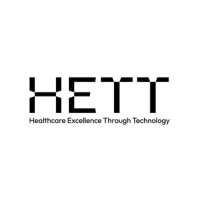On the 26th and 27th of September 2023, the digital health community came together at the HETT Show at ExCeL London. This year’s event explored the systems and infrastructure that underpin and enable a data-driven NHS and how patient outcomes can be delivered through the meaningful implementation of technology.
In a keynote fireside conversation, NHS England CIO, John Quinn, spoke with Tristi Tanaka, Head of the Chief Medical Portfolio, NHS Black Country ICB, about shaping the future of NHS infrastructure.
Tristi kicked off the Q&A-style chat by asking:
As the new CIO – what are your top priorities to deliver for the NHS?
Quinn’s first response was to point out how difficult it is to put priorities (which are constantly in flux) in order; which ones get dealt with first, he said, depends on the day.
The NHS operating model, the delivery of ICSs (Integrated Care Systems), and the relationships between the national centre and ICSs and Trusts are all important, he said. He argued that the main challenge right now is the merging of these three organisations. While this brings “an opportunity to shrink things,” he said it also creates pain – this is the current challenge.
A high priority, Quinn explained, is maintaining services and keeping everything going through a time of significant transformation. He said this includes delivering national services to citizens and the system, ranging from the NHS app to the collaboration platform and NHS mail. He also highlighted many national-based services - relating to cyber security, IT operations and critical national infrastructure – and the priority to keep those running smoothly through change.
He expressed the importance of delivering national architecture and standards on behalf of the system while also providing support to the frontline. Quinn went on to say that a significant drag on transformation has been the underinvestment over time in infrastructure. Budgets haven’t lent themselves well to transformation, he explained. However, he argued, this can be addressed through national intervention.
Other areas Quinn was keen to highlight as significant priorities included an evolving mindset for “the digital way” and investment in talent. City officials, governments, and others, he said, must understand good service design, and there must also be a focus on the people who deliver the technology.
Quinn defined his role as one that will bring all this together.
Tanaka then interjected, adding, “We’re in a multi-generational workforce with many challenges and people. I love that you said the ‘digital way’ is about the people.”
She then asked:
How do we support the different professions and professionals working in the NHS?
(including clinical or medical, but also those working in management and expert professional areas supporting and enabling those services).
Quinn expressed his dissatisfaction immediately, saying that the professions are pretty poor. He felt it incumbent upon his role to advocate and consider standards and capabilities.
He said: “There are 52,000 digital data and technology professionals in the civil service. If you add the DDaT professionals in the NHS and the four nations, it is probably about the same. Together, you’re looking at about 100,000 professionals. That’s a big economic challenge, and I think some standardisation around the profession and its development is pretty important.”
Quinn added that there is also a case for parity regarding funding and salaries.
Talking about wider professions and the people who deliver the value of the work, Quinn spoke about his priorities to ensure national services are robust enough to seamlessly support staff without breaking. He added that his intention is to enable the frontline and deliver for them.
Quinn was keen to express his hope for the future: “It’s going to be the most exciting profession [health] for the next few decades. The blurring of the line between a digital professional and a clinician will continue.” He added, “The upskilling of everyone is very important.”
Cue Tanaka’s next question:
How do you see the relationship developing between NHS England and the frontline?
Quinn referred back to his initial comments on the operating model of the NHS to remind us that the role of the national centre and its relationship with ICSs is still developing.
“I guess part of our role is to get that ‘digital way’ of thinking going; it’s about designing services, not just policy. If we can help make better decisions, cognisant of the opportunities of digital data, science, and technology, I think we’ll get better outcomes every day.”
Quinn was keen to highlight another essential part of his role as influencing and developing leaders. “My job is to help the CEOs of those delivering the [new technologically enabled] environments understand that opportunity, so they ask the right questions, provide the right support, and challenge in the frontline.”
He explained, “We’re looking at ways to have a centralised expert capability that we can put in at key moments, like at start-up, providing the things people need to undertake their digitalisation programme.”
There’s more to it than just the funding, he said. “We must think about how we can put that centralised capability of expertise in when people need it and when they want it. And we need the expertise of the frontline to help form our national decision-making around protective structures and services.”
Tanaka asked if this model represented advisory crisis support, to which Quinn replied, “Yes, you could say that.”

Tanaka then asked:
Mapping out the next 5-10 years of critical systems infrastructure – how will policy and strategy support the systems to develop key digital capabilities?
Quinn keenly stated the importance of meeting the needs of frontline colleagues by working with them to define policies, strategies, and standards together. The intent, he said, is to make sure policy and procedure are representative and coherent.
Reflecting on how the strategy would support the development of critical digital capabilities, Quinn again referred to infrastructure development, saying this was a key takeaway from the digital baseline assessment. Providing further explanation, he said, “I think if we are running our data centres and then building new data centres, we are in the wrong place. We need to signal that there is a different world out there.”
This, Quinn stated, is about moving into the cloud, or better still, adopting software as a service. He said, “I think that’s a message also to the market, that the sooner they get into software as a service (SaaS), and that friction-free opportunity, the better.” He also made the point to suppliers that if you’re not going for it, someone else will.
Quinn demonstrated his support for moving towards healthcare SaaS but was keen to acknowledge the difficulties in infrastructure transformation. The most significant barrier, he said, is to address legacy infrastructure and out-of-date systems and equipment, which is taking money away from actual change. “Where you have problems with legacy technology, you increase the area vulnerable to cyber-attack, creating huge costs, which acts as a kind of sail in the water for transformation.”
Quinn acknowledged the need for work at the centre to show the “sunny uplands of opportunity” but emphasised that real change would need to come through funding strategy and policy. He also explained the importance of the market, saying, “How we set up commercial frameworks, the standards that we ask for suppliers to set within them, and the role of interoperability and standardising architecture will be an important pathway to software [as a service].”
On pushing for change, Quinn said, “I think it’s incumbent upon my team and I and the rest of the organisation to make the case that technology equals efficiency.”
Quinn recognised the cost implications of failed infrastructure and expressed a desire to make reasonable plans, with investments broken up into chunks. He said this would prevent errors and enable effective implementation of corrections. “I’m a big fan of programmes and spaces that allow you to postpone, depending on political need or changing circumstances.”
“Our job is to help articulate the benefits and allow for movement, so digital waves can occur. Standards and interoperability will help that.”
Another vital aspect to be considered over the next 5-10 years, he said, is privacy, information governance, and ownership of data. On artificial intelligence (AI), Quinn said it is becoming a reality in the spectrum of health. He forecasts that it will be baked into systems within five years and will help with productivity, coding, testing, and cyber. There are also risks associated with that, he said.
“We’ll have disasters in infrastructure and disasters in cyber. And I think that will help us understand our policy and our response. Of course, I want to mitigate before they happen to us or do it as an exercise.” He expressed the importance of making investments now to address these things.
Rounding up, Quinn said it is incumbent upon him and his team to deliver a digital workplace that is safe and secure for the people who work in it and for those who supply into it. He believes the future of healthcare will provide a space where everyone can do the best work of their lives.
Tristi Tanaka closed the discussion by thanking John Quinn for the many excellent points made and especially for his honesty on tech disasters.
About HETT
HETT is the UK’s leading health tech and digital health conference, showcasing world-leading technologies and solutions in one space. The annual summit provides free CPD-accredited educational sessions, interactive activities, and networking opportunities with 150+ innovative suppliers and 200+ expert speakers. Thousands of decision-makers and influencers from across the healthcare community attend.
Register for our next event, HETT Show, taking place on 24-25th September, ExCeL London.
%20(1).png?width=500&height=58&name=HETT%20insights%20logo%20RGB-04%20(1)%20(1).png)


